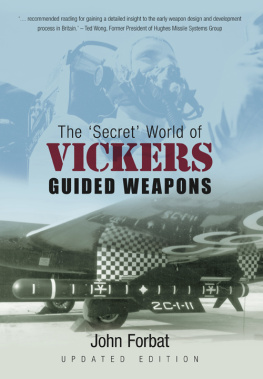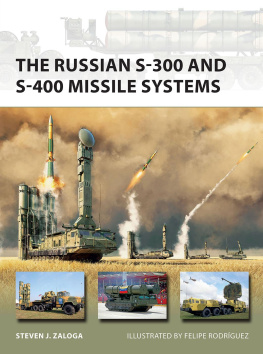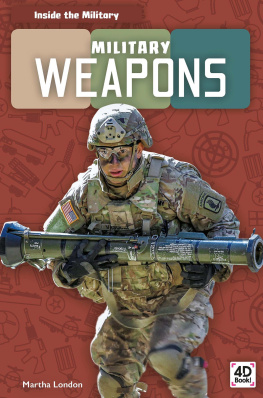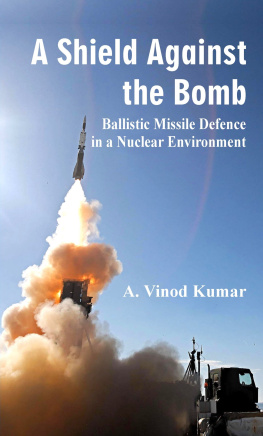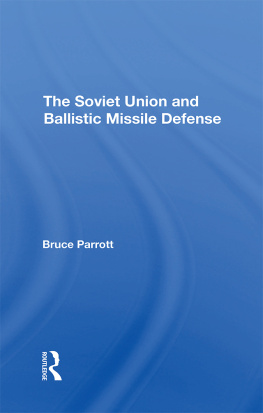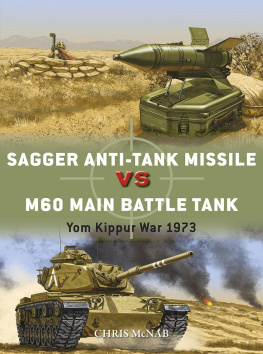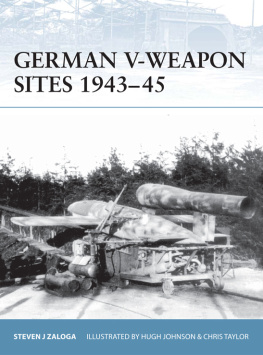

To Mary, my ever-loving, patient and indulgent wife.
In the process of researching this book and filling out my own recollections, many ex-colleagues and others have made helpful comments and supplied photographs which have served well, to enhance the authenticity and completeness of the Vickers Guided Weapons story. Without being certain of mentioning everybody (and apologising for any I may omit), I would like to thank these helpful friends and colleagues.
Perhaps firstly I should thank Julian Temple, Curator of Aviation at The Brooklands Museum for suggesting I write this history in the first place. Also Museum Director Allan Winn, for his support and the loan of Fire Across the Desert , the official story of Woomera and the AngloAustralian joint project, which provided some of the photographs. I would also like to thank aviation author Bill Gunston for his support and encouragement, including a loan of his own compendious publication of guided weapons worldwide, Mr W. Nicolson (ex-ICI Summerfield Research Station) the Public Records Office and The University of Cambridge library for facilities afforded to assist the research and the curators at RAF Cosford Museum, Bovington Tank Museum, The National Army Museum, The Imperial War Museum, The Science Museum, The Airborne Forces Museum, Doncaster AeroVenture, as well as members of BAE Systems, MBDA, Quinetiq, The Defence Manufacturers Association and several historians mentioned in the References.
Finally, among other colleagues from my time at Vickers, I wish to thank Brigadier John Clemow, who (well into his nineties) has given encouragement and help, also Jim Cole, John Duck, Chuck Fry, Paul DeWinton-Jones, Harry Fryer, John Goodwin, Henry Hunt, Ron Jupp, A.W. Kitchenside, John Lattey, whose assistance with editing so greatly improved the second edition, Spud Murphy, Mick Padgeham, Peter Rice, John Stroud, John Whetmore, Richard Williams and any others I may have omitted.
If some of the more detailed diagrams are hard to read, this reflects the archival nature of the originals.
CONTENTS
By Brig. John Clemow, MA (Cantab), FIMA, FIEE, FIMech E
(John Clemow is an acknowledged expert in Guided Weapons technology and development)
This book fulfils an important function in detailing the so far untold story of technological and aviation developments at Vickers, in the relative dawn of Guided Weapons technology and the management problems involved.
The author, John Forbat, was a Hungarian by birth, and left Hungary in 1936. He went to school in London and lived there throughout most of the Blitz. After the war, he took his degree in Aeronautical engineering and became a graduate apprentice with Vickers Armstrongs. There, he became an enthusiastic early member of the Guided Weapons team, rising to senior designer. His book fills a necessary gap in the history of British aviation developments and in the achievements of Vickers at the site of the Brooklands Motor Racing Track, in Weybridge.
Before the advent of Guided Weapons, weaponry problems can be illustrated by the performance and limitations of the 6 Pounders, which were well known and summarised in such sayings as, get him with your shot or he will get you!. The angry response from Normandy was, you couldnt hit the side of a barn at 1,000 yards. The Armament Design Department was ordered with the highest priority to investigate the reasons why the proof firings of both gun and ammunition were so satisfactory and those obtained under field conditions were appalling, and secondly to recommend the changes that might be made to affect a solution and the timescale. In a matter of weeks rather than months, the problems were solved and the necessary changes made to gun and ammunition.
The designers of the gun had realised that the accuracy depended upon the shell being a very good fit in the gun barrel, and more important was to have a very good fit of shell and shell rifling, bearing in mind that with a high velocity gun the wear would be high. These requirements were easily overlooked in the pressures of war, especially as the gun and ammunition were also used for other less stringent purposes. In fact, it was one factory that had applied to the inspector for a concession to allow a batch of over-machined shells to be accepted. This was approved for this batch only, but in error applied to all factories making this type of shell; a temporary solution was provided by making a neoprene plastic collar to fit snugly over the driving band of the shell. Surprisingly, this worked well. The collars held the shell aligned accurately in the gun barrel, but fragmented and fell harmlessly as the shell left the gun.
The war in Europe ended a few months later and no more complaints were received, so we considered that the local difficulty had been solved. However, it was common knowledge among armaments officers that on average, it took the firing of some 20,000 anti-aircraft shells to bring down each enemy aircraft. Something had to be done to improve the accuracy and the lethality of all kinds of armaments. In the development of complex Guided Weapons, the principle of looking for simple solutions to apparently intractable problems applied as much as it did to the 6 Pounder.
Brig. John Clemow
With the benefit of post-war tours in Germany investigating the V2 Rocket and the V1 Flying Bomb, then later in the USA, John Clemows attentions in the Army moved onto the new technologies to create high precision Guided Weapons, and this brought him into the developments of early guidance test vehicles originating from the Royal Aircraft Establishment at Farnborough. The period covered by this book commences during his tenure of various technical posts in the Ministry of Supply, as Guided Weapons were being developed across British aircraft companies. As director of Guided Weapons Projects in the MOS, Brig. Clemow found himself wading into problems encountered with a number of major GW projects, and he physically moved in with several aircraft companies to get the problems rectified and onto programme.
When Sir George Edwards invited him to join Vickers Armstrongs (Aircraft) Ltd as chief engineer, weapons, in 1957, he retired from the Army and joined Vickers. The company had already spent seven years developing ground-to-ground, air-to-ground and air-to-air Guided Weapons for the government, but suffered cancellation of three major GW projects. He took over as the company made the courageous decision to continue on a private venture basis and as an ever more capable technical design team was built under his leadership, embarking on the development of the Vigilant anti-tank missile. Besides completing the development of Vigilant into a successful Infantry and Armoured Corps weapon, the same team developed the Navigation and Attack System for the highly advanced TSR2 tactical strike and reconnaissance bomber for the RAF. The latter project required comprehensive system design and integration, and inventiveness, and the management of contractors engaged a number of technologies ranging from Radar and Inertial Navigation, to automatic Terrain Following and sophisticated weapon aiming, all co-ordinated by central computers. This work became the basis for developing later aircraft such as the currently operational Tornado.
John Forbat
This fascinating personal account of the behind-the-scenes action at Vickers during the heyday of British aviation and weaponry invention in the 1950s and 1960s, is both authoritative and very, very readable. A researchers goldmine, this detailed book is crammed with facts, personal anecdotes, previously classified material and comprehensive explanations which, in a very real way, chart the evolution of todays generation of breathtakingly advanced frontline aircraft and their associated weapon systems. All of the hallmarks of modern aviation: accuracy, reliability and technical sophistication, which we take so much for granted nowadays, were then largely unheard of, and todays successful frontline jets are now the product of, what were at the time, seemingly improbable specifications, long hours of detailed analysis, complex trials and sheer inventive genius.
Next page
